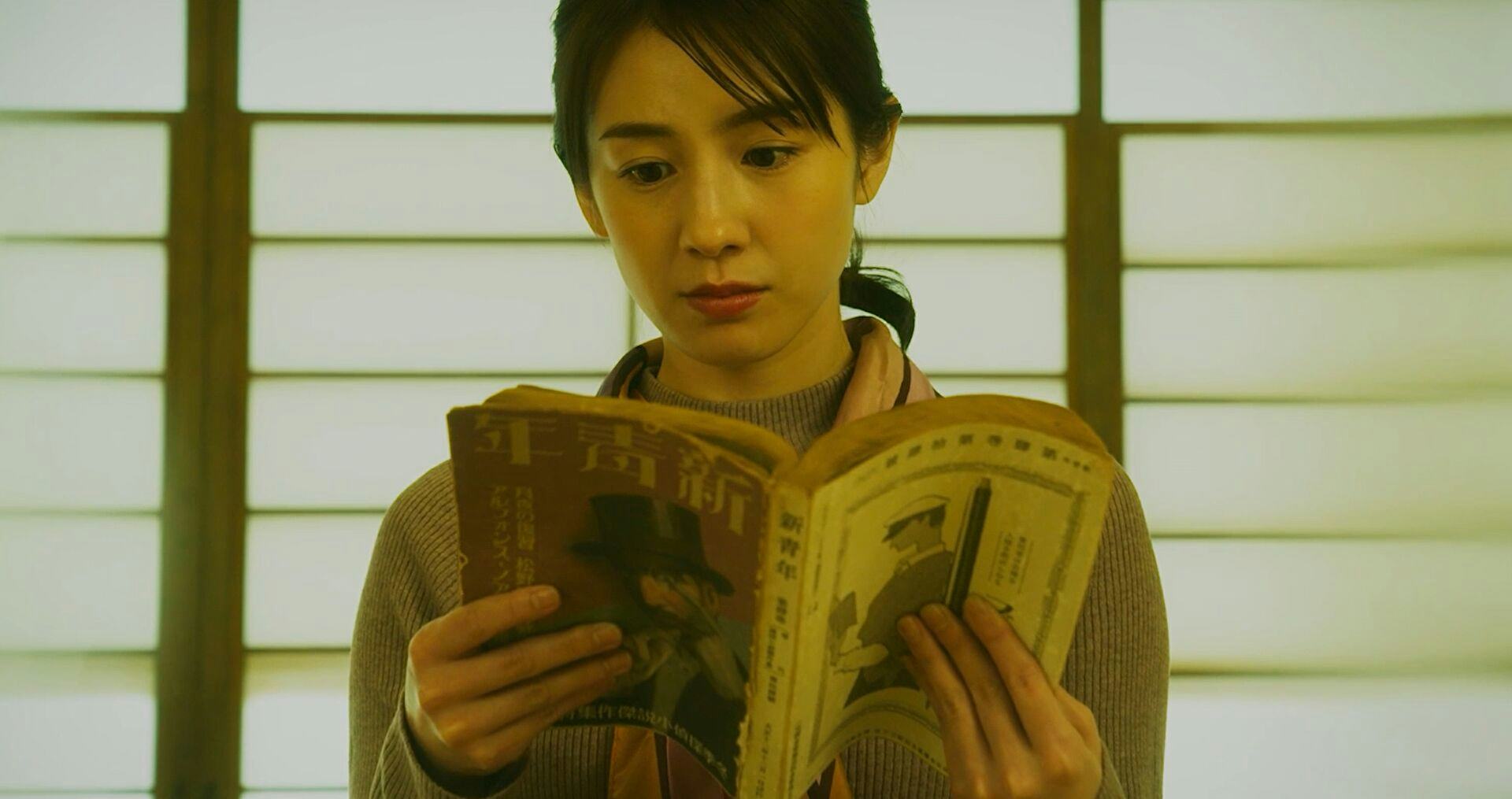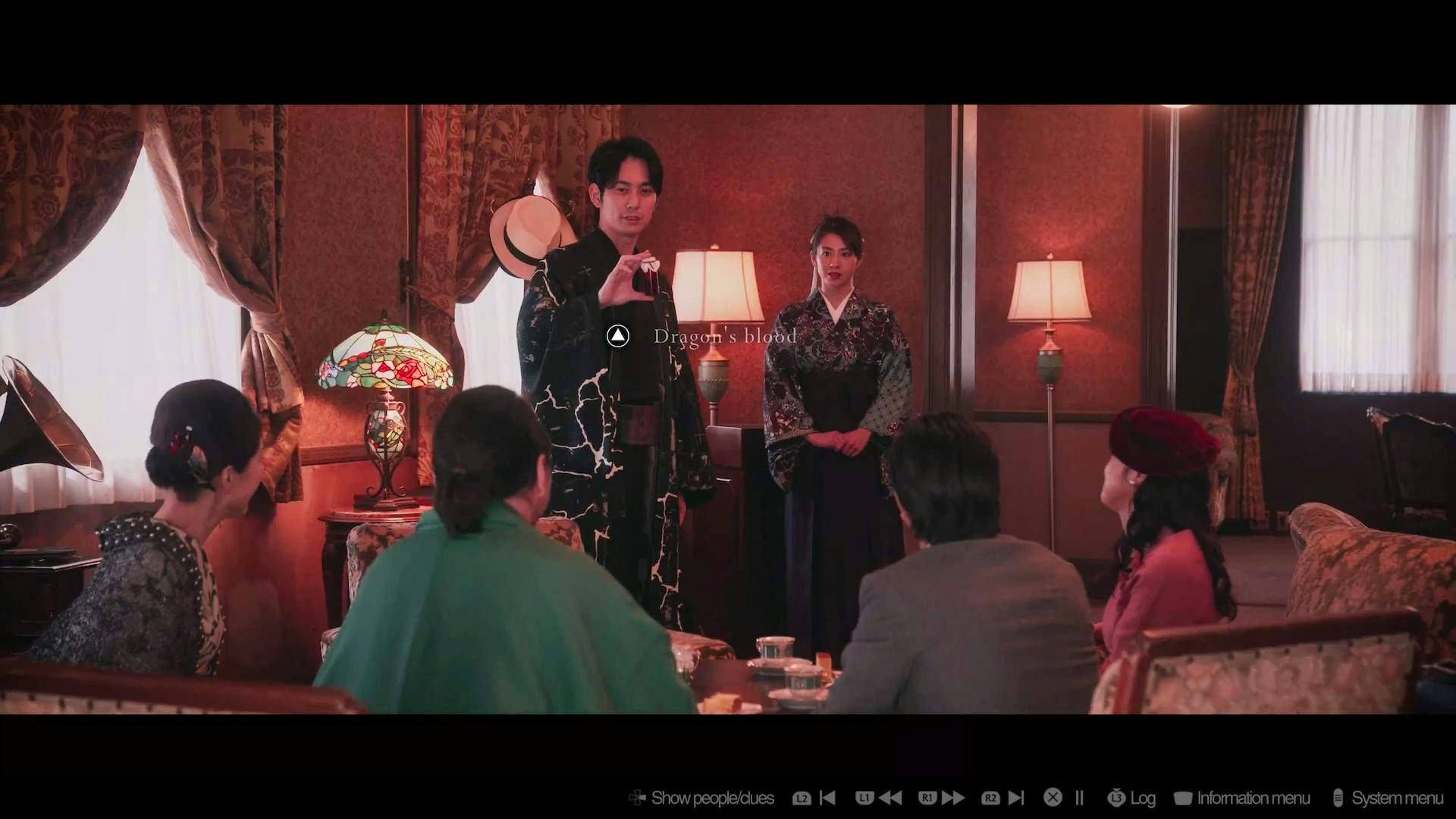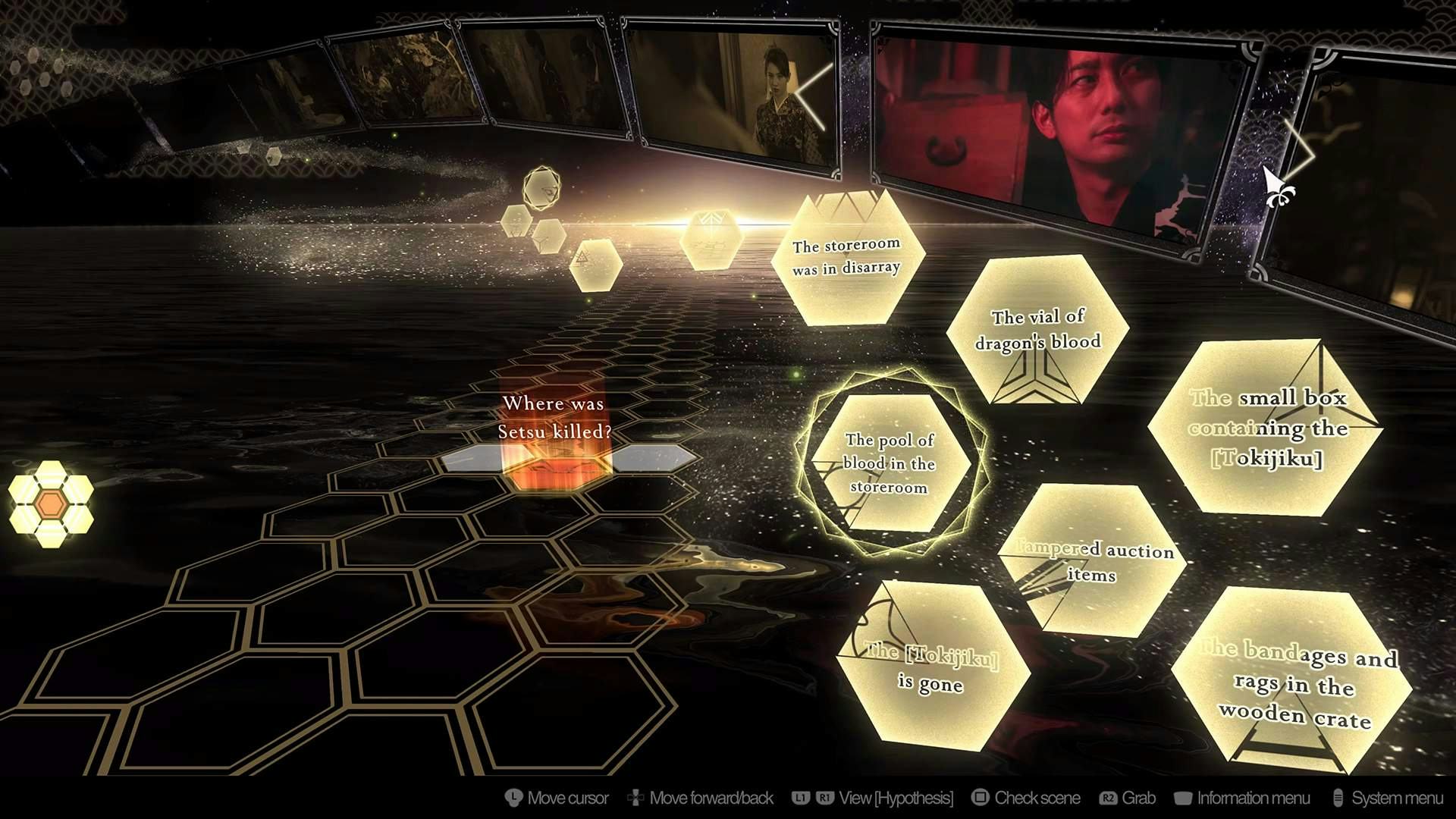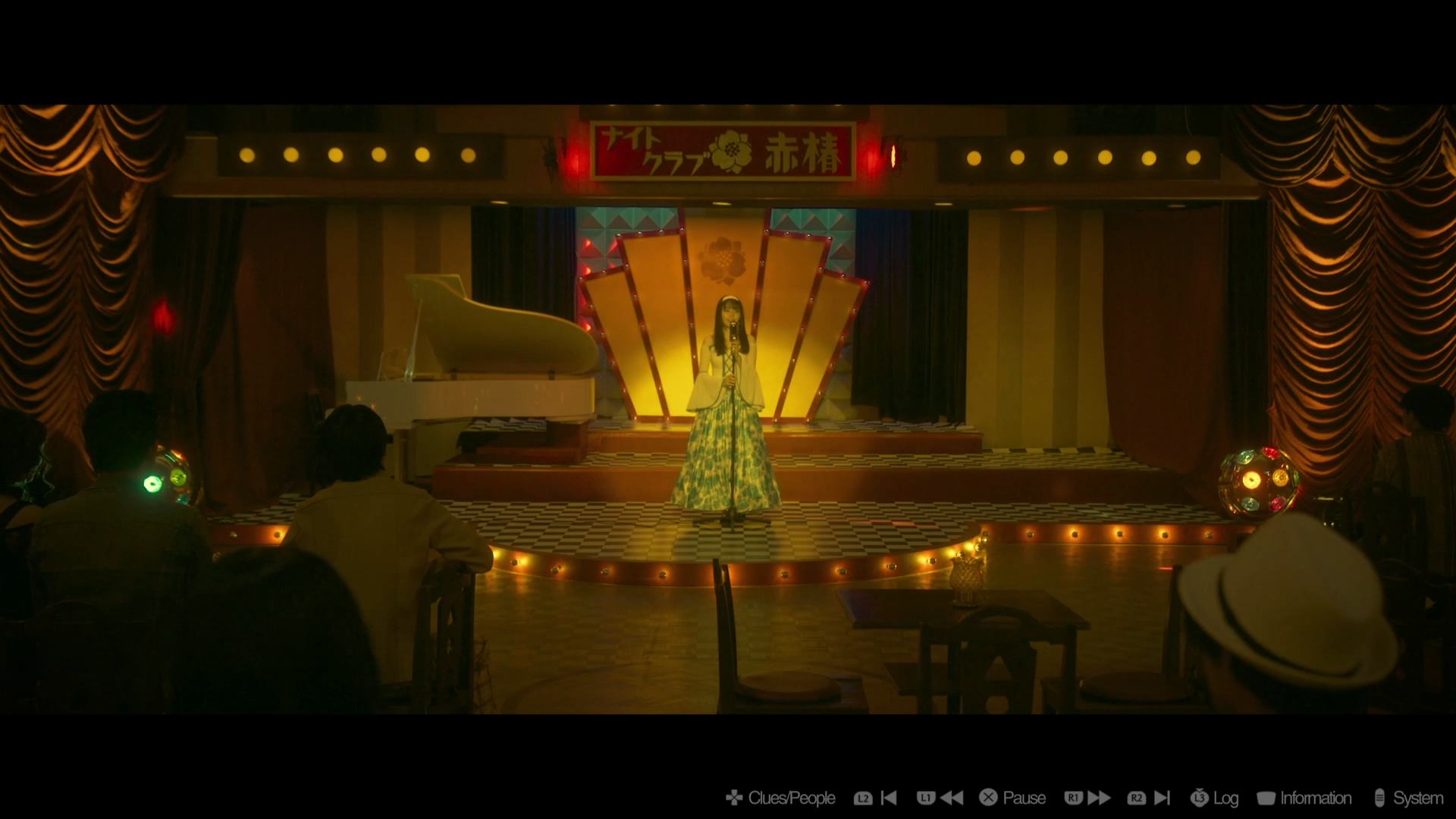
I started The Centennial Case: A Shijima Story at 7 p.m., and by midnight, I was hopelessly hooked by a fascinating story that weaves through time.
The Centennial Case is a new title from Square Enix and h.a.n.d., a studio that helped with the development of 2021’s Neo: The World Ends With You. It’s an oddball for Square Enix, as a historical-focused FMV that asks players to solve murder cases spread out across a century. It’s an utterly unique title that boasts astounding production values, supported by a cast of actors that do an incredible job of playing multiple characters.
There are a few niggling issues with the various gameplay systems, but it’s an incredible experience that easily stands out as one of my favorites of the year.
A century of stories
The Centennial Case follows a young mystery novelist named Haruka Kagami, as she’s invited by her friend Eiji Shijima to attend his affluent family’s succession ceremony. A skeleton was recently discovered on the grounds of the Shijima estate, and Eiji’s real reason for inviting Haruka is to help him discover the identity of the skeleton as well as the truth behind the supposed “Fruit of Youth” that the family has passed down for generations.

The game is broken up into multiple chapters, with each chapter representing a specific case. The trick is that some of these murders happen in the present, while others took place at various points in the past, like 100 years ago or 50 years ago.
The Centennial Case has a small cast of characters, but each actor plays various characters in both the past and present. The conceit here is that the past segments are Haruka reading through books or reports and using her imagination to turn members of the Shijima family into the characters. It’s a fun twist, and the game’s dedication to making each time period feel unique and vibrant is truly stunning.
In each chapter you see the buildup and murder scene play out first, and as the scene plays out you can press a button to collect clues that pop up. Once the scene ends Haruka enters a “cognitive space” where clues become tile pieces that you need to put together, in order to form a hypothesis. You need to use logic to place tiles in the correct place. However, each tile also has visual design cues to clue you in on where they go. The catch is that you’re revealing every possibility during this section, and not all of the clues you piece together are correct. It’s up to you to figure out what’s true and what isn’t.

FMV games are known for being light on gameplay, but these reasoning sections are easily the weakest part of The Centennial Case. The whole process simply feels too “guided,” and the visual cues combined with a hint system simply make it all too easy. The system simply isn’t very engaging, even though it’s necessary to figure out what happened. Luckily, things get much more interesting in the next section.
Once you’ve come up with a hypothesis you have to accuse the murderer and choose the correct dialogue choices to get to the truth. During this section, the live-action sequences kick back in, and the feeling of intrigue and mystery is full force in these sections.
Cracking the case
Much of the game’s success can be credited to the phenomenal work of the actors. FMV games typically feel a bit cheesy in terms of acting and presentation — it’s part of the charm. But The Centennial Case practically feels like you’re watching a serialized murder-mystery television show. The cinematography and editing do a great job of framing each scene and making events feel snappy. While there’s certainly humor to be found, the performances consistently strike the right tone to keep you immersed in the story.

Part of what keeps The Centennial Case surging onward is the constant sense of mystery that envelops the story. Each murder case feels like its own self-contained story, while still providing hints that contribute to the overall narrative. The story itself is generally gripping, and the game even shakes things up by introducing a particular segment that becomes an “escape room.”
An intuitive interface also makes The Centennial Case easy to enjoy. You can seamlessly pause, fast-forward, and rewind. While watching scenes, you can even bring up primers that provide details on characters and clues. It’s all designed to help players go at their own speed, and let you go back and find information if things are moving too fast. The game even has an English audio dub, but I’d still recommend playing in Japanese — it feels far more authentic to the experience.
The gorgeous orchestral soundtrack also deserves special mention, consistently elevating the emotion of scenes. What’s even more impressive about the music is that it’s often tailored to each time period. For example, one chapter revolves around a club in the 1970s that prominently features a singer. The music of this time period seamlessly changes to fit that idea, then seamlessly changes back. I wouldn’t be surprised at all if The Centennial Case’s soundtrack ends up in discussions for the best of the year.

I can’t stop thinking about how unique The Centennial Case feels in every aspect. Charm permeates every facet of the game, and I can’t get enough of it. Even though some of the gameplay elements feel underbaked, the game does such a good job of keeping you invested that it hardly matters.
There are plenty of murder-mystery games out there, but The Centennial Case truly feels unique. I sincerely hope the game sees success, as I’d love to see Square Enix and h.a.n.d. revisit this style of game in the future.
8/10
The Centennial Case: A Shijima Story launches May 12 on PS4, PS5, Nintendo Switch, and Steam. Inverse played the Nintendo Switch version.
INVERSE VIDEO GAME REVIEW ETHOS: Every Inverse video game review answers two questions: Is this game worth your time? Are you getting what you pay for? We have no tolerance for endless fetch quests, clunky mechanics, or bugs that dilute the experience. We care deeply about how a game’s design, world-building, character arcs, and storytelling come together. Inverse will never punch down, but we aren’t afraid to punch up. We love magic and science fiction in equal measure, and as much as we love experiencing rich stories and worlds through games, we won’t ignore the real-world context in which those games are made.







